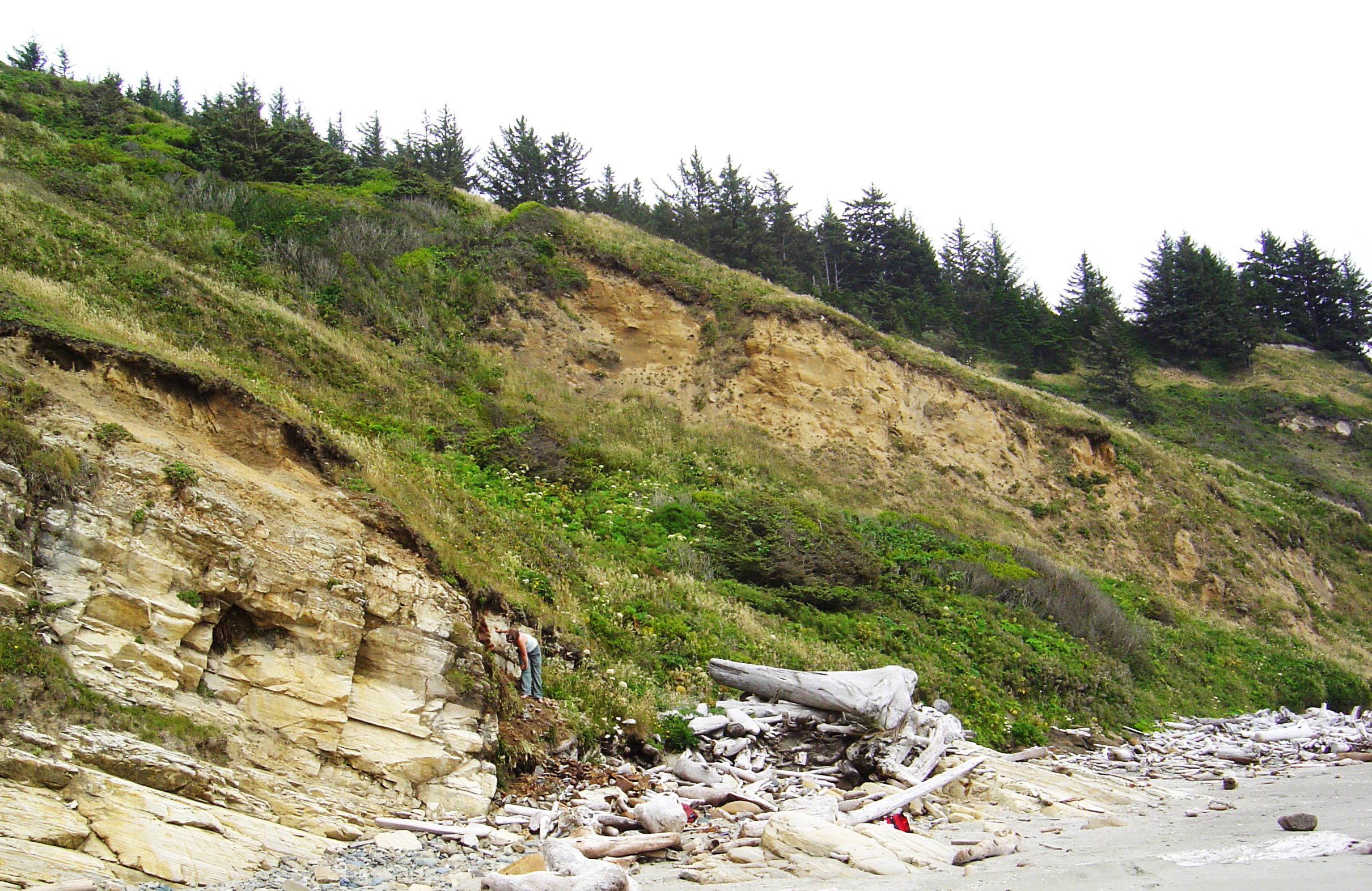The Bulletin of the Museum of Natural History, University of Oregon, accepts original articles in the fields of Archaeology, Botany, Ethnology, Geology, Paleontology, and Zoology, with preference for topics related to Oregon and the Pacific Northwest.
Vol. 29 (2022): Early Miocene Cape Blanco Flora of Oregon

Deposition of the shallow marine sandstone of Floras Lake was interrupted by a transient deltaic progradation of redeposited volcanic tuff, which contains the Cape Blanco flora. Dating by 40Ar/39Ar on fresh plagioclase constrains the age of the plant-bearing tuff to 18.24 ± 0.86 Ma, because we interpret this age of eruption and landscape loading with ash, as within only a few years of redeposition. Several plausible sources of the tuff can be identified from caldera eruptions in the Cascade Volcanic Arc. The relation between the early Miocene Cascade volcanic arc and the Klamath Terrane has been fixed since the early Miocene, and the high Cr2O3 in the sandstones is an indication that the source area for the sandstone of Floras Lake was the Klamath Terrane. Fossil leaves and other plant organs of 33 species of the Cape Blanco flora represent floral diversity and paleoclimate of coastal Oregon during the early Miocene. The flora includes a variety of thermophilic elements from California, including coast redwood (Sequoia affinis), and avocado (Persea pseudocarolinensis), and is numerically dominated by live oak (Quercus hannibalii), and chinquapin (Chrysolepis sonomensis). The size and proportion of serrate margins of the fossil leaves are evidence of mean annual temperature of ~14 º C and a mean annual precipitation of ~223 cm/yr for the Cape Blanco flora. Comparison of the Cape Blanco flora with the Temblor flora of California and the Seldovia flora of Alaska reveals a latitudinal gradient of ~ 0.6 º C/degree latitude, compared with a gradient of ~0.3 º C/degree latitude from isotopic composition of marine foraminifera of the northeast Pacific Ocean. Both results confirm that the late early Miocene mean annual temperature at 45º north latitude was 4-5 º C warmer than today.
